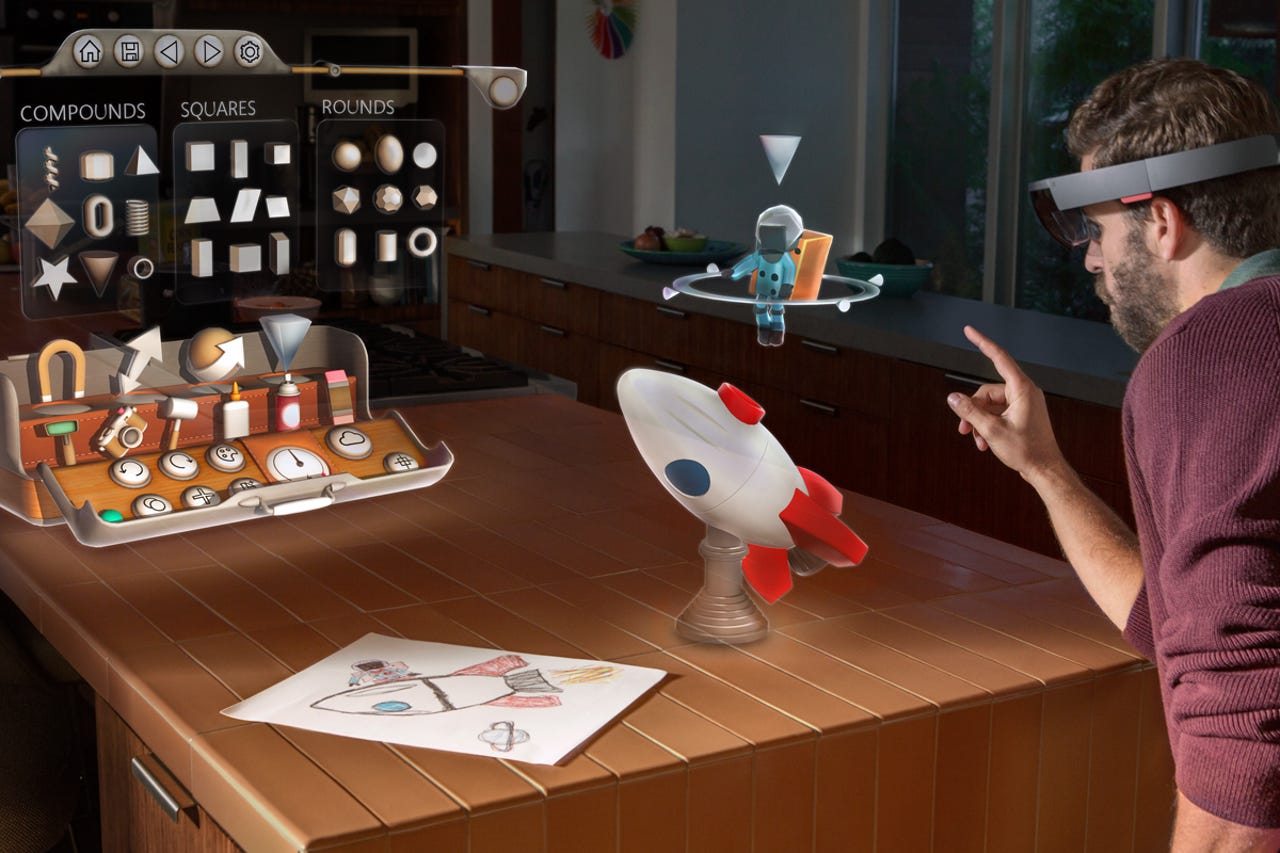Microsoft HoloLens: What tech, business decision makers need to know


The promise of HoloLens.
Microsoft is opening an experience center at its flagship New York City store to woo developers to its HoloLens augmented reality platform, but business and tech decision makers should watch the effort for pilots as well as potential production uses.
My walkthrough of HoloLens at Microsoft's flagship New York City store ran through three experiences--one for gaming, one for story telling (think PowerPoint in 3D and holograms) and a studio for creating experiences.
TechRepublic: HoloLens public demo opens: Should businesses and developers be bullish? | CNET: Developers, meet your HoloLens: A tour of Microsoft's new developer showcase
The upshot is that Microsoft will bring developers to its experience center to highlight possibilities. The software giant is hoping that it can use Windows 10 and HoloLens to stoke developer interest. In many respects, Microsoft's approach to HoloLens is similar to Google Glass. The aim is to put the HoloLens technology in developer hands in the first quarter and see what happens. As Mary Jo Foley noted, HoloLens is a lot more polished than 11 months ago, but still needs work.
Previously: Microsoft cranks up the HoloLens hype | Microsoft driverless cars? Volvo and Redmond start new pact with HoloLens project | Exclusive: CEO Nadella talks Microsoft's mobile ambitions, Windows 10 strategy, HoloLens and more | Why do you need a HoloLens? Microsoft offers researchers $500,000 to work it out | Microsoft's HoloLens big for business? Object Theory thinks so | NASA to give Microsoft's HoloLens a spin in space | Microsoft's HoloLens: Wooing developers will be everything
Many of the HoloLens applications are expected to apply to businesses. Microsoft has high-profile HoloLens collaboration programs with NASA and Cleveland Clinic as well as companies like Volvo and Dassault Aviation.
Here's a look at my key takeaways for decision makers pondering HoloLens (CNET review), which isn't ready for production. Note that Microsoft's effort is early and these observations represent a snapshot in time.
There's a learning curve. Microsoft's HoloLens is controlled by eye tracking, gestures and voice. The key gesture is the finger tap where you hold your fist up and click. I found that my finger tap wasn't picked up unless I held it in one position. Microsoft did the finger tap so that HoloLens wouldn't pick up random gestures yet had something that was intuitive. If a person talked with their hands, you can just picture the HoloLens issues. Voice terms such as "magnet" to make changes to a project will also have to be learned. The voice commands were also spotty in areas. Bottom line: You'll need a training budget.
The headsets are heavy, but improving. I tried three headsets and at first they didn't seem to be much of a bother. In a 40 minute collaboration session at work, the HoloLens would feel heavy. The first iteration of the headset had a wider field of vision, but was also bulkier. For mass adoption, the HoloLens needs to shrink more yet allow for a larger field of vision, but the hardware headed in the right direction.
Augmented reality PowerPoint could be interesting. One of the experiences revolved around HoloLens storytelling, which highlighted a presentation and collaboration area revolving around a luxury watch. You could view key data points and navigate through a product with another person with HoloLens. The biggest issue would be time. If a PowerPoint jockey went through 50 slides the bridge of your nose and potentially your neck would break with the current iteration of the headset.
Analytics may be the big sell. With the storytelling-PowerPoint experience, the field of vision was a bit off for me, but there was a heat map where you could see what people viewed in a presentation. The analytics alone could justify a pilot and you could see how Microsoft will tie in its various enterprise apps. A sales executive using HoloLens for a presentation could know whether she bombed or shined and tweak accordingly.
I didn't get a headache. I wrestled with putting this observation in, but aside from a bit of eye strain I survived the HoloLens. Typically, I can't handle 3D movies without a migraine. If you're going to roll out the HoloLens in a pilot featuring more than a few employees you need to know the headache possibilities. There is one disclosure worth noting though: I'm taking 1,000 mg of naproxen a day at the moment for my knee so maybe I wouldn't have had a headache anyway.
TechRepublic: Virtual reality in 2016: The 10 biggest trends to watch | 9 industries using virtual reality | Virtual reality vs. augmented reality: Debating the merits | NASA shows the world its 20-year virtual reality experiment: The inside story